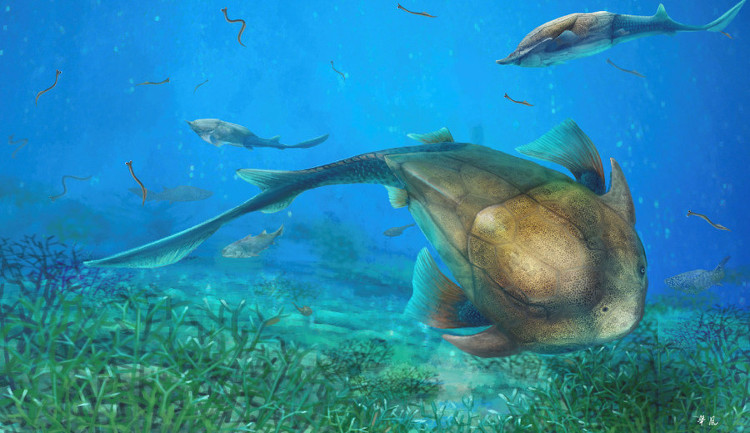Human jaws evolved from ancient fish
Prehistoric fossils found in China include bones with jaw characteristics of modern vertebrates.
Scientists published the results of a study of Qilinyu prehistoric fossil fish , about 30cm long, appearing 423 million years ago, excavated in Yunnan Province, China in the October 21 issue of Science. The fish has a bone-like jaw section of modern vertebrates, including humans, according to Reuters.

Ancient fish fossils are characterized by modern vertebrate jaws.(Photo: Dinghua Yang).
Fish appeared more than 500 million years ago, the first vertebrate in the world. However, in primitive times, they did not have jaws. Catfish is the first vertebrate to have a jaw, an important evolutionary step that helps them catch prey. They have the head and most of the body covered with armor, the jaw line has bone blades that act as teeth to tear and crush the prey.
Qilinyu belongs to the skinfish, but has three bones, including the lower jaw, the upper jaw and the jaw. This is a feature of a modern vertebrate jaw.
"In humans, the lower jaw is completely composed of the lower jaw bone. The upper jaw is made up of the upper jaw bone but the front teeth are the vestiges of the front jaw," Per Ahlberg, a paleontologist at the Great Study Uppsala, Sweden, explain.
This finding contrasts with the previous view that modern jaws evolve later, occurring in the early stages of the bony fish layer. "We now know that a limb genus evolves into a modern vertebrate and jaw," Ahlberg said.
- Evidence shows that humans evolved from fish
- New discovery: Human ancestors are sharks
- Human feet and hands have evolved from ancient fish fins
- 'Foolishness' hunting fish in the Ham Luong River: Seeing the corpse coming to the face 'death'
- Excavating fish fossils 429 million years old
- Learn species of jaws filled with mysterious sharp teeth
- Many ancient viruses are lurking in frogs, fish, and reptiles
- Why can alligators bite their prey fast?
- This is the fish that has the worst mouth on the earth
- This is a human face if evolved from other animals that are not apes!
- Human genome detection contains DNA of ancient viruses
- Fossils of 50 million years of the ancient fish herd nearly 300 children
 Discovered an ancient centipede fossil 99 million years old
Discovered an ancient centipede fossil 99 million years old Discovered bat-like dinosaurs in China
Discovered bat-like dinosaurs in China Discovered a 200-year-old bronze cannon of the coast
Discovered a 200-year-old bronze cannon of the coast Discover 305 million-year-old spider fossils
Discover 305 million-year-old spider fossils